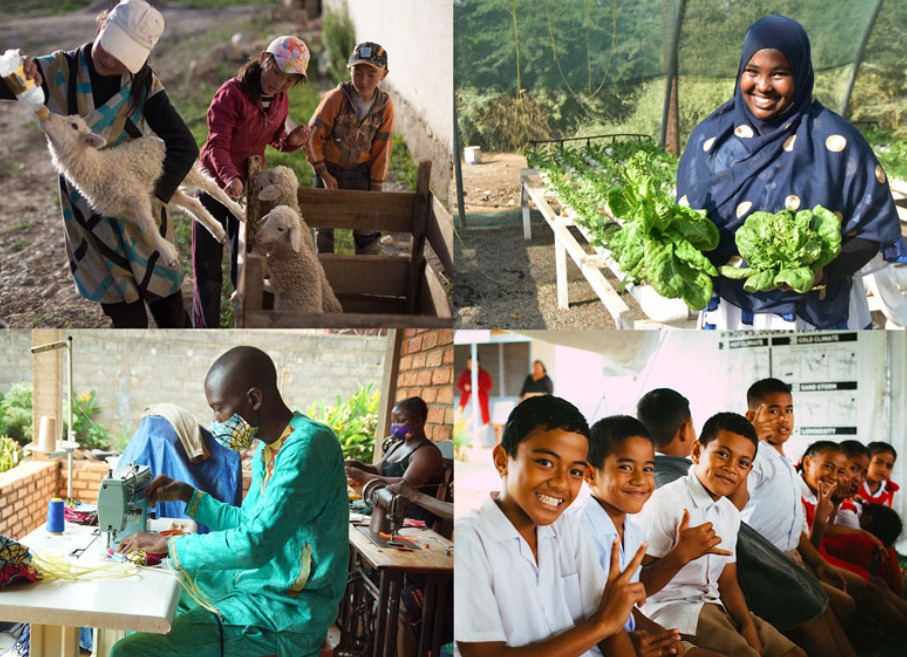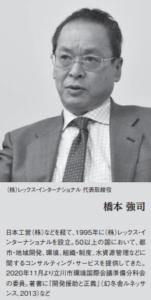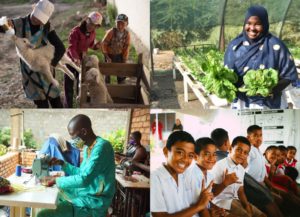IDJ- ENGLISH A historic IDA replenishment hosted by Japan signals the global community’s unwavering commitment to the poorest countries
A historic IDA replenishment hosted by Japan signals the global community’s unwavering commitment to the poorest countries
DAVID MALPASS|FEBRUARY 02, 2022
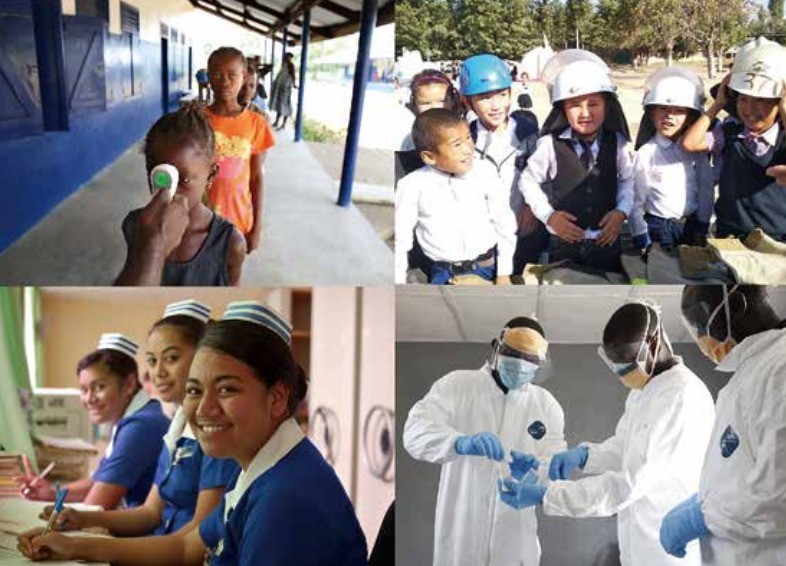
Next month will mark two years since COVID-19 was declared a global pandemic. In this time, we have seen the global health emergency become an economic crisis, with the poorest and most vulnerable countries hit the hardest.
As a result of COVID-19, global poverty has increased for the first time in a generation. A lot of the development gains achieved over the last 15 years in terms of education, health, and nutrition have been wiped out by this crisis. At the same time, the effects of climate change present additional challenges across countries.
In December 2021, the international community came together to support the largest ever replenishment of the International Development Association (IDA), the World Bank’s arm that provides zero- to low-interest loans and grants to the world’s poorest countries. While IDA financing is normally renewed every three years, the current replenishment was advanced by one year to respond to increased demand over the course of the pandemic from our client countries. Japan hosted the virtual pledging meeting that saw $23.5 billion of contributions from donors, which enabled a $93 billion replenishment, the largest financing package in the 61-year history of IDA.
Japan’s support to IDA has been tremendous as one of the largest donors in the twentieth replenishment (IDA20), as it was in the previous replenishment of IDA as well. With support from donors, including a generous contribution from Japan, the 74 countries that rely on IDA funding—most of them in Africa but including Asian and Pacific Island countries such as Bangladesh, Nepal, Cambodia, Laos, Micronesia, and Papua New Guinea—will have $93 billion in concessional financing available over the next three years, with $23.5 billion coming from donor contributions and the rest from a combination of financing raised in the capital markets, repayments, and the World Bank’s own contributions. This means that every $1 that donors contribute to IDA is leveraged into almost $4 of support for the poorest countries, achieving greater value for donor resources through a non-fragmented platform and increased efficiency for development impact.
In the first 20 months of the pandemic, IDA delivered nearly $57 billion in grants and low-interest loans , the largest crisis response in its history. This involved working with partners to assist countries to purchase and deploy vaccines. Nearly 70 countries benefited from IDA financing for vaccines, health professionals’ training, and hospital equipment.
Donor contributions will help IDA support efforts to rebuild human capital, including universal health coverage, vaccines, and nutrition; strengthen debt management and transparency; stimulate green growth with quality infrastructure while adapting to the impacts of climate change; and bolster crisis preparedness, including enhancing disaster risk management.
IDA builds on six decades of experience preparing for, responding to, and recovering from crises—be it Ebola, natural disasters, economic shocks, or global pandemics. Over the last decade, IDA countries have been hit by nearly eight times as many natural disasters relative to the 1980s. This is why IDA joins forces with partners such as Japan to help countries adapt to climate change and mitigate impacts of disasters. In fact, in the fiscal year 2021, 61% of total IDA climate finance was for adaptation and IDA helped 62 countries institutionalize disaster risk reduction as a national priority.
IDA is also one of the main sources of concessional development finance for addressing malnutrition, clean drinking water, and food insecurity. IDA will continue to work with partners to help countries fight malnutrition, improve hygiene, scale up climate-smart agriculture, and repurpose agricultural subsidies . These efforts go hand in hand with the global emphasis on nutrition, such as the Tokyo Nutrition for Growth Summit that Japan convened in December 2021.
There is still much work to be done to support developing countries through the COVID-19 crisis. IDA countries are still lagging in vaccinations and economic recovery. We have seen that the recovery has been dramatically uneven, with per capita income in advanced economies growing at 5% compared to only 0.5% in low-income countries. Many of these countries also increasingly grapple with the impacts of conflict, climate change, and mounting debt challenges, and they need the grants and built-in debt relief that IDA provides. IDA addresses rising debt levels in the poorest countries through the implementation of the Sustainable Development Finance Policy (SDFP), which aims to incentivize IDA-eligible countries to enhance debt transparency, fiscal sustainability, and debt management.
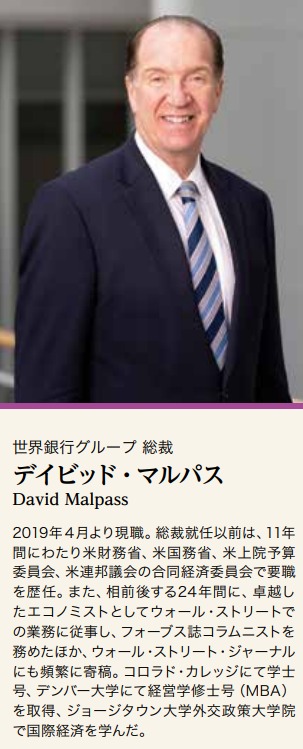
The trust and cooperation of the international community remains crucial. IDA20 is a prime example of such global commitment. The international community is grateful to the Government of Japan for hosting the IDA20 pledging meeting in December and for providing a strong platform to support the world’s poorest and most vulnerable toward a resilient recovery for all.
This piece was also published on LinkedIn.
Follow David Malpass on Linked-In
*****以下、日本語原文*****
歴史的な第20次増資会合
最貧国支援への日本の確固たるコミットメント
新型コロナウイルス感染症のパンデミックが宣言されてから、3月で2年となる。この間、公衆衛生危機は経済危機に発展し、世界の最も貧しく、最も脆弱な国々が甚大な影響を被った。
新型コロナにより、世界の貧困人口は拡大した。これは、過去20 年間で初めての事態だ。今回のコロナ危機で、教育、保健、栄養分野における過去 15 年にわたる開発の成果の多くは消し去られ、そして気候変動に伴う影響がさらなる課題を突気候変動に伴う影響が さらなる課題を突き付けている。2021 年 12 月、 国 際 社 会 は、国際開発協会(IDA)について過去最大規模の増資に合意した。
IDA は、超長期・低利の融資やグラントを最貧国に提供する世界銀行グループの機関だ。通常、IDAの増資は3年ごとに行われるが、パンデミックにより資金ニーズが拡大する中、第20次増資(IDA20)となる今回は1年前倒しで行われた。2021 年 12 月に日本が主催した IDA20 プレッジング会合で、ドナー各国は 235 億ドルの貢献に合意した。これにより、IDA の61 年の歴史の中で最大規模となる 930 億ドルの増資が実現した。
日本の IDA に対する貢献は大きい。IDA20 においても、前回の増資同様、最大貢献国の一つだ。日本をはじめとするドナー各国の支援により、IDA 支援を受ける世界 74 カ国(アフリカ諸国に加え、バングラデシュ、ネパール、カンボジア、ラオス、ミクロネシア、パプアニューギニアといったアジア・太平洋諸国も含む)には、今後3年で 930 億ドルの譲許的資金が供与される。うち 235 億ドルはドナーによる貢献で、残りは国際資本市場からの調達資金、借入国からの返済金、世界銀行の自己資金で構成されている。
IDA 自身による債券発行などを通じたレバレッジ効果によって、1 ドルのドナーからの貢献は、最貧国向け支援額としては4ドル近くに拡大する。そしてドナーのIDA への貢献は、IDA という分野ごとに細分化されない単一のプラットフォームを通じて、より効果的な開発成果の実現につながる。パンデミックから 20 カ月の間、IDA はグラントまたは低利融資として 570 億ドル近くの支援を行った。IDA の歴史上、最大の危機対応である。こうした支援の実現にあたっては、さまざまなパートナーと連携しつつ、被支援国が行うワクチンの購入やワクチン接種の展開をサポートする必要があった。これまでに 70 近くの国がワクチン、医療関係者への研修、病院機材に IDA 資金を充当した。
ドナーの貢献は、ユニバーサル・ヘルス・カバレッジ(UHC)やワクチン、栄養といった分野の人的資本の再構築、債務管理・透明性の強化、質の高いインフラの活用と気候変動による影響への対応を図るグリーン成長の促進、防災など危機への備えの強化のために役立てられる。
IDA には、60 年以上にわたり、エボラ出血熱、自然災害、経済危機、パンデミックなどさまざまな危機に対処してきた実績がある。引き続き、危機への備え・対応、危機からの回復に取り組んでいく。過去 10 年、IDA 支援国は 1980 年代と比べて8倍近い規模の自然災害に見舞われている。IDA は、日本などのパートナーと力を合わせ、気候変動への適応や自然災害による被害の抑制を図るための支援を行ってきた。2021年度においては、IDA の気候変動ファイナンスのうち 61%が「適応」関係だった。また、同年度において、IDA は 62 カ国に対し、防災が国家戦略上の優先事項として位置付けられるよう支援した。
IDA は、栄養、水、食料などの分野においても主要援助機関の一つだ。栄養不良との闘い、公衆衛生の改善、気候変動の影響を勘案した農業、農業助成金の見直しを巡り、さまざまなパートナーと協力している。こうした IDA の取り組みは、東京栄養サミットで見られたように、栄養分野に対する世界的な関心の高まりと歩を合わせたものである。
コロナ危機からの回復に向けた途上国への支援を巡っては、やるべきことが多く残されている。例えば、IDA が支援する国々はワクチン接種や経済回復面で遅れをきたしている。また、経済回復のペースは驚くほどまちまちで、一人当たり所得の伸びで見ると、先進国が5%で成長している一方、低所得国は 0.5%に留まっている。
途上国の多くは、これまで以上に紛争、気候変動、積み上がる債務による影響に直面しており、IDA によるグラント支援や、IDA支援に組み込まれた債務救済を必要としている。そうした中で IDAは、最貧国において積み上がる債務への対処として、持続可能な開発金融政策(SDFP)を実施している。同政策は、IDA 支援を受ける国に対し、債務の透明性、財政の持続可能性、債務管理を強化するためのインセンティブを与え
るものだ。
国際社会からの信頼と協力は、極めて重要である。こうした国際的なコミットメントを最もよく体現するのが IDA20 だ。国際社会は、日本政府に対し、2021 年 12月の IDA20 プレッジング会合を主催し、世界の最も貧しく脆弱な国々が強靭な経済回復を実現できるよう力強い基盤を提供して頂いたことについて、感謝している。
『国際開発ジャーナル』 2022年2月号掲載


